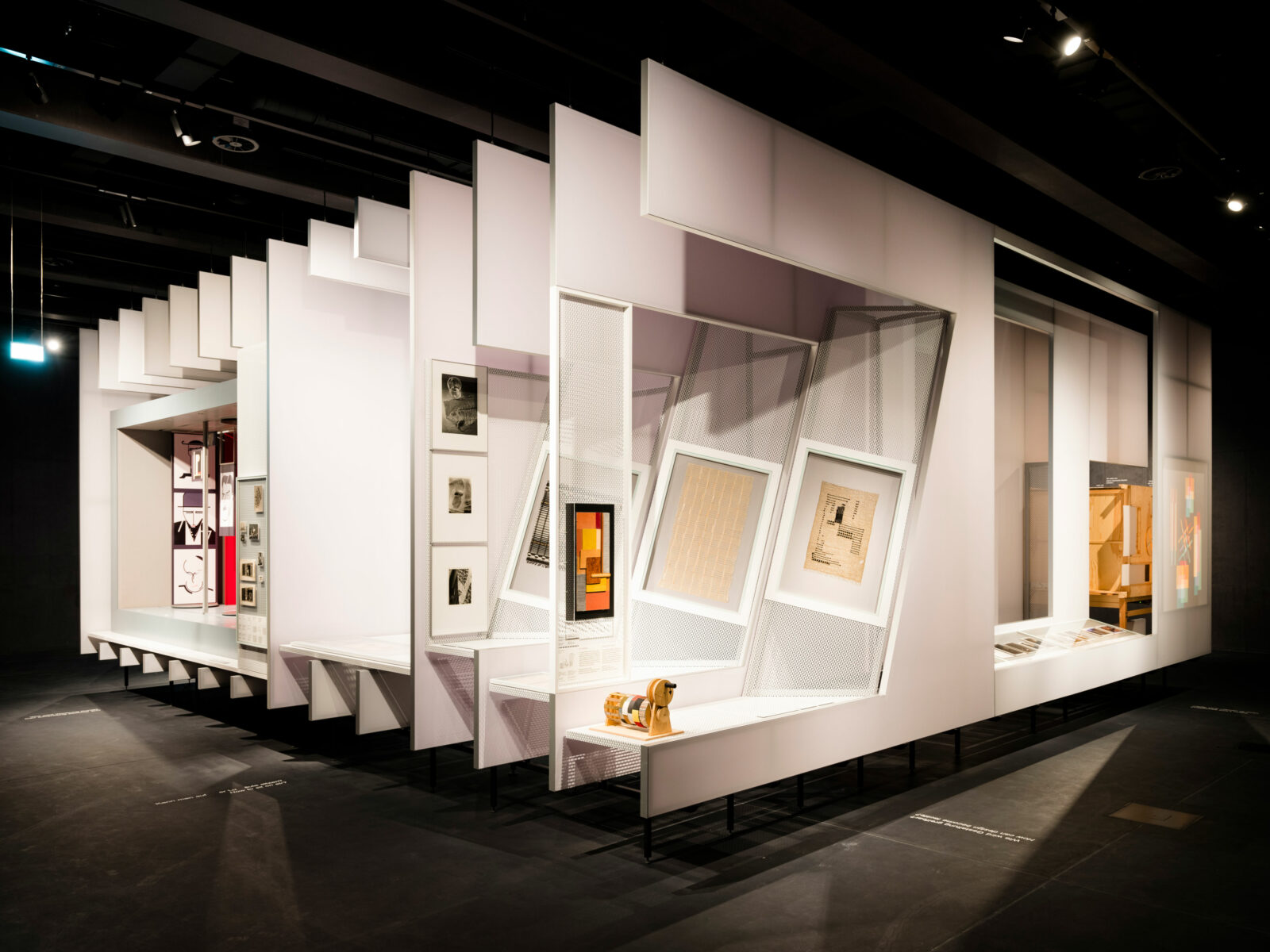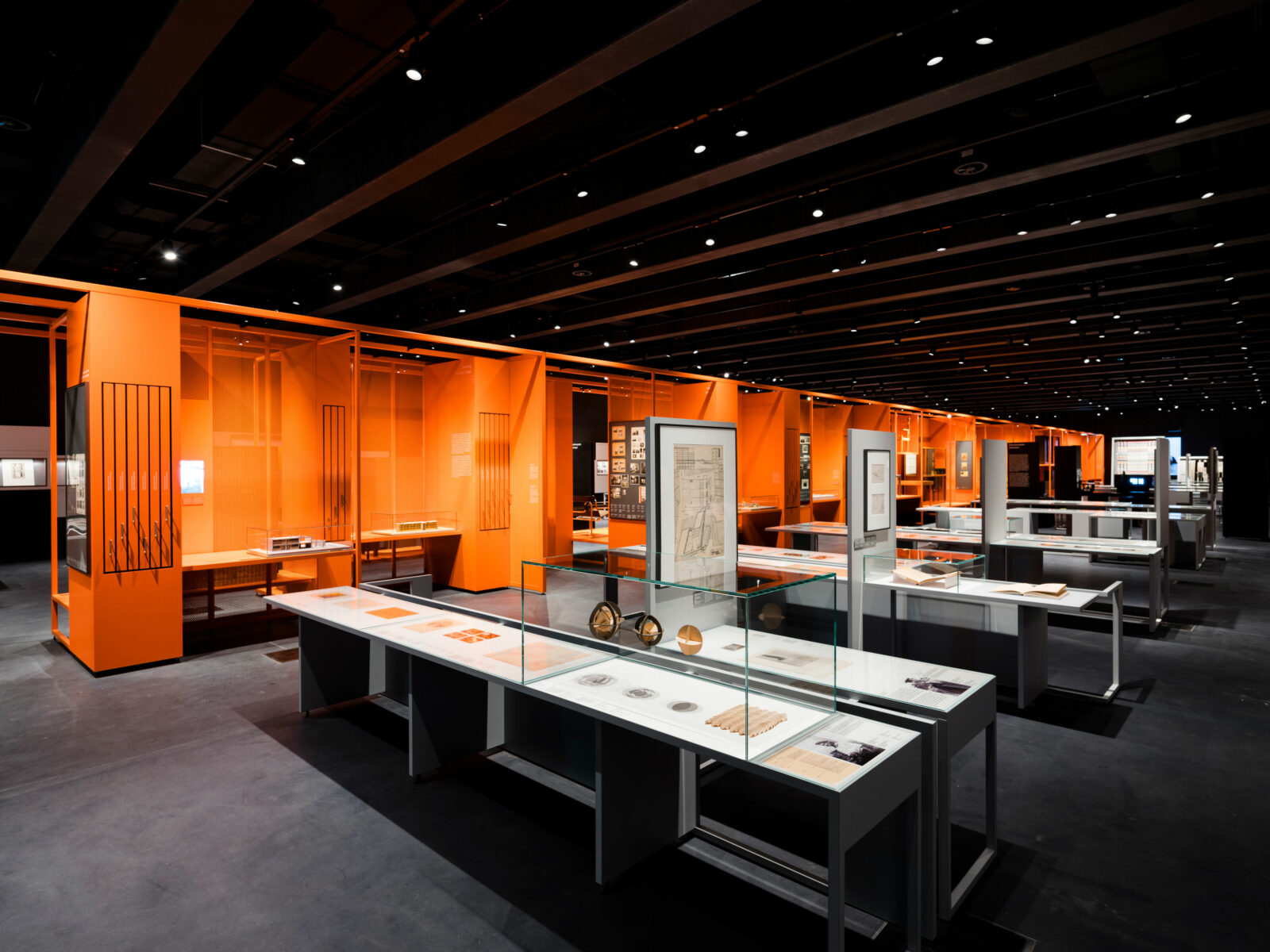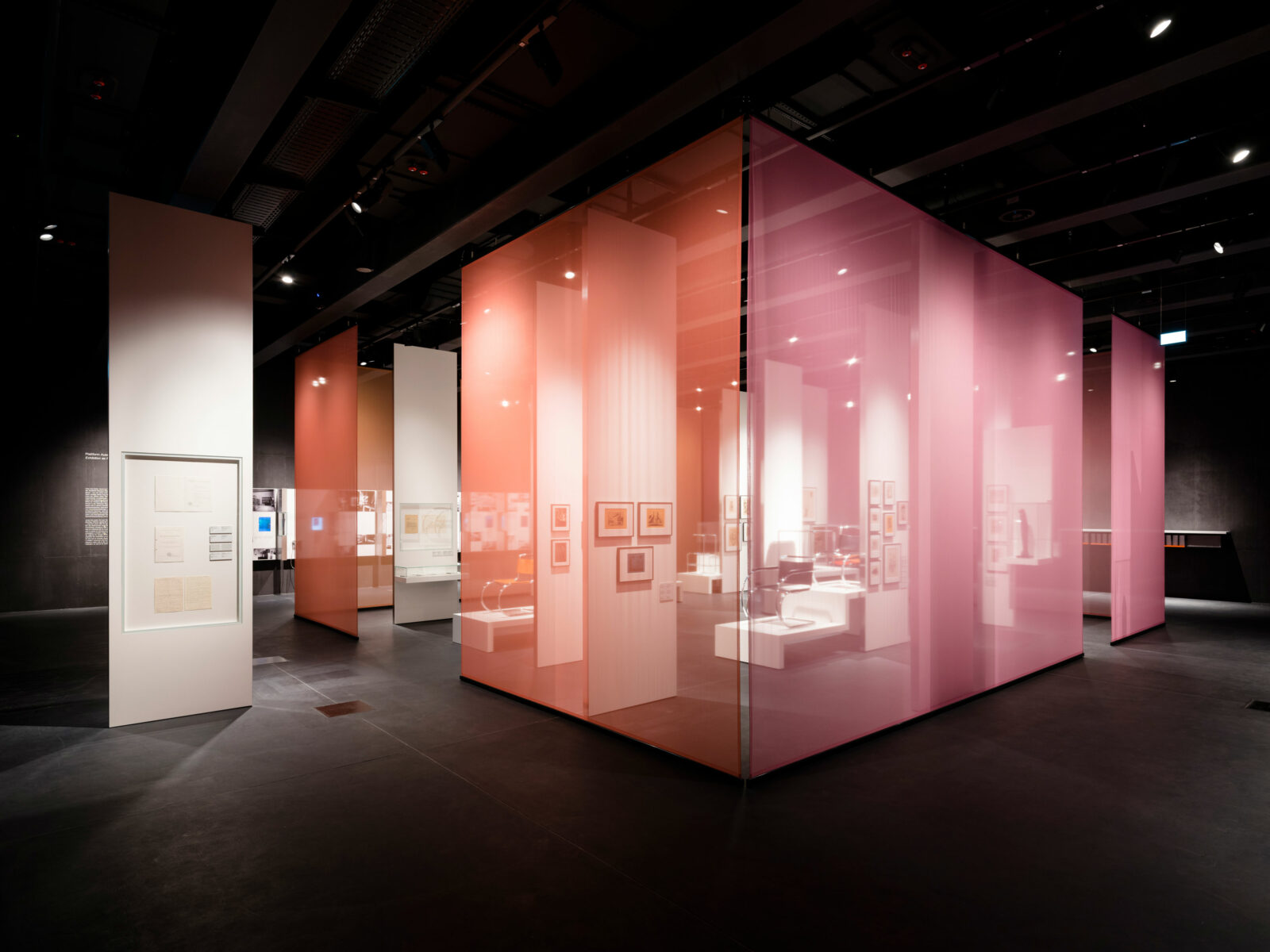
Anna Gille + Matthias Kaiser
21 Feb – 2 Nov 2025
Bauhaus Museum Dessau

On 1 November 1976, the city of Dessau purchased 148 artworks by Bauhaus artists for a total of 145,000 Deutschmarks via the Galerie am Sachsenplatz in Leipzig. Shortly afterwards, from 4 December 1976, the objects were exhibited in the reopened Bauhaus Building. Here, on the occasion of the 50th anniversary of the Bauhaus, the Wissenschaftlich-Kulturelles Zentrum (Scientific Cultural Centre) of the German Democratic Republic (GDR) commenced its work. From this point onwards, it was committed to the legacy of the Bauhaus.
The exhibition at the Bauhaus Museum Dessau is entitled “Versuchsstätte Bauhaus. The Collection”. It tells the story of the famous school in Dessau in three major thematic sections: Bauhaus as Experiment, Factory as Horizon, and School as Testing Ground. The Bauhaus is portrayed as a vibrant place for teaching and learning, artistic experiment, and working on industrial prototypes.
The collection of the Bauhaus Dessau Foundation comprises around 50,000 catalogued exhibits, and is the second largest collection on the subject of the Bauhaus worldwide, after the Bauhaus Archive in Berlin. On 1 November 1976, the city of Dessau purchased 148 artworks by Bauhaus artists for a total of 145,000 Deutschmarks via the Galerie am Sachsenplatz in Leipzig. Shortly afterwards, from 4 December 1976, the objects were exhibited in the reopened Bauhaus Building. Here, on the occasion of the 50th anniversary of the Bauhaus, the Wissenschaftlich-Kulturelles Zentrum (Scientific Cultural Centre) of the German Democratic Republic (GDR) commenced its work. From this point onwards, it was committed to the legacy of the Bauhaus.
A special feature of the collection of the Bauhaus Dessau is that it contains a large number of works by students who later became influential players in the fields of architecture, design, and art, including many women. The exhibition “Versuchsstätte Bauhaus”, does not focus on the well-known Bauhaus design objects and their designers, but on the school and its students – the everyday life of learning and teaching, encompassing free design and industrial prototype, artistic experimentation and economic pressure: a training facility and a space for self-determination and equality. The various sections of the exhibition concentrate on teaching concepts and educational work, as well as on the Bauhaus as a multi-faceted testing ground, a collaboration partner for industry, and a place of lively exchange.
The exhibition embeds the design ideas of the Bauhaus, which are so familiar to us today, within the context of their own era and its social situation. It does not fail to mention the crises and constraints under which the school struggled for its existence. In a climate of political change and cultural uncertainty, the Bauhaus community, with its worldwide network, questioned the conditions of teaching, living together, and even gender relations that had prevailed at that time. During this process, the school encountered not only support, but also criticism, even in Dessau. “Versuchsstätte Bauhaus” lays out the school’s conflict-ridden struggle to achieve social recognition for art and design.
The Berlin design office Chezweitz developed a special scenography for the exhibition, curated by Regina Bittner, Dorothée Brill, and Wolfgang Thöner. It translates the complexity of the Bauhaus school into a spatial experience.




The “Intermezzi” are smaller, temporary exhibitions within the collection presentation. They expand the collection and give visitors the opportunity to become active themselves.
Setting up the collection exhibition
Project management:
Regina Bittner, Katja Lehmann, Clarissa Seidel
Curators:
Regina Bittner, Dorothée Brill, Wolfgang Thöner
Research assistant:
Lutz Schöbe
Archivist:
Sylvia Ziegner
Registrar:
Christin Irrgang
Restorer:
Rüdiger Messerschmidt
Education:
Bauhaus Agents Dessau / Bauhaus Agents Dessau:
Tabea Kießling, Anne Schneider, Philine Sollmann,
Silke Wallstein
Exhibition design and scenography:
chezweitz GmbH, museale und urbane szenografie:
Sonja Beeck, Detlef Weitz, Ines Linder with Alexander Butz,
Hans Hagemeister
Exhibition graphics:
chezweitz, Johannes Bögle with Christoph Bruns, Anja Rausch
Exhibition lighting:
chezweitz with Urs Schreiner (Envue Homburg Licht GmbH)
Media planning:
chezweitz with Rolf Schmidt
The Bauhaus Dessau Foundation is a non-profit foundation under public law. It is institutionally funded by the Federal Government Commissioner for Culture and the Media, the State of Saxony-Anhalt and the City of Dessau-Roßlau. The Bauhaus Museum Dessau and the exhibition Versuchsstätte Bauhaus. The collection is sponsored by:
